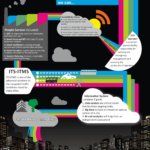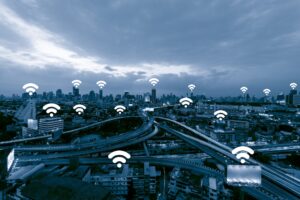
12 April, 2021blog
According to Deloitte, Americans spend an average of 17 hours a year searching for parking. What may seem like a mere nuisance and time drain is also costly, resulting in $345 per driver in wasted time, fuel and emissions.
Cities are taking note and turning to technology to create more frictionless parking, improve experiences for residents and visitors and integrate parking into “smart” ecosystems.
Technology, when appropriately placed, can also provide new data insights to municipalities, making them better equipped to manage the curb. In all, smart parking delivers on the promise of making communities stronger and more sustainable.
Mobile payment apps are often at the core of smart parking technology. These small yet powerful tools offer parkers more payment options, while delivering actionable insights to municipalities looking to use data to shape parking policies and offerings.
Mercator Advisory Group’s report, “Mobile Payments: Making a Comeback,” shows consumer mobile payment adoption increased from 48% in 2018 to 60% in 2019. In the U.S. alone, six in 10 consumers either browsed or shopped via their mobile devices in 2019, according to the same report.
Statista notes the number of mobile payment users in the U.S. alone is predicted to reach 74.9 million by 2022, up from 55 million users in 2018. Consumers, ever more reliant on their phones, are increasingly using their devices instead of their wallets or checkbooks.
While mobile payments are an obvious boon for retailers, municipalities also have an opportunity to integrate mobile payments into their parking operations to improve resident and visitor engagement.
The difference is in the data
Historically, the parking meter has been the principal curb management tool for municipalities. However, the curb’s transformation from primarily a parking spot to a viable economic zone drives the need for municipalities to get more than money from their meters. The shift to mobile technology provides the frictionless experience drivers want, while monetizing the curb in ways that had previously been difficult or impossible to do.
Additionally, the digital tools enabling smart parking collect valuable data. Those data trends provide insights into information such as the number of motorists who park in a particular zone, the length of time for parking sessions and much more. This gives civic leaders a level of insight to help them determine how to manage the parking zone. In the end, everyone wins.
Fostering better user experience
In all, modern motorists appreciate managing their parking from the driver’s seat or even inside their destination. Mobile payments technology eliminates the need for motorists to count or even carry coins — or stand in dimly lit spaces to access a meter, feeding into the promise and goal of smart parking.
To bridge current practices with modern mobile payments technology, municipalities should explore and deploy smart parking meters, parking-assistance apps, vehicle detection sensors or cameras with license plate recognition. However, the true return on investment lies in enabling parking operators to monitor occupancy rates in real-time so they can regulate demand, optimize supply and better meet motorist needs.




